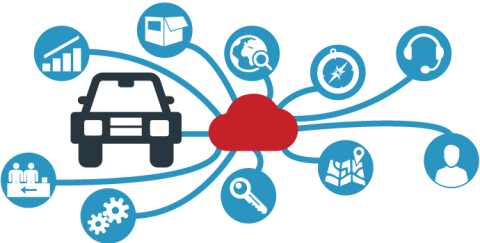

This past week Fiat Chrysler Auto (FCA) announced the recall of 4.8 million US cars to install revised software in their Engine Control Modules (ECMs). A few years ago the same manufacturer had to recall over 1 million vehicles when cybersecurity researchers showed that they could penetrate the car’s control systems remotely using the vehicle’s connected infotainment system.
These 2 recalls show two sides of the connectivity “coin”. In one case connected car systems were not securely isolated. In the other case, no connectivity was available, so a software upgrade required a service procedure on each vehicle. With respect to connectivity, poor FCA seems damned if they do and damned if they don’t. If both of these recalls illustrate the way not to do things, then what is the right way to plan for systems of the future? This question is equally relevant to industrial IoT deployments and to industrial automation systems of the future, not just to cars. I’m propose 2 key lessons from this debacle:
 First, suppliers can no longer afford to deploy disconnected products or systems. If the ECM upgrade service costs $200 per vehicle (my estimate), then FCA will spend nearly $1 billion on this recall. That figure will subtract from their bottom line. Ouch. And that billion will not add one bit of additional functionality to the vehicles, and the same cars are still subject to a new vulnerability that would have to be remedied the very same costly way. In hindsight (always easy, I admit) an earlier investment in product designs with secure connectivity and remote software update capability would have saved almost all of that billion dollars, and would greatly reduced the financial risk of future incidents.
First, suppliers can no longer afford to deploy disconnected products or systems. If the ECM upgrade service costs $200 per vehicle (my estimate), then FCA will spend nearly $1 billion on this recall. That figure will subtract from their bottom line. Ouch. And that billion will not add one bit of additional functionality to the vehicles, and the same cars are still subject to a new vulnerability that would have to be remedied the very same costly way. In hindsight (always easy, I admit) an earlier investment in product designs with secure connectivity and remote software update capability would have saved almost all of that billion dollars, and would greatly reduced the financial risk of future incidents.
Do you think you can’t afford the risk of designing secure connectivity into your products and systems? Then ask yourself how much it would cost you (and your customers!) to repair a similar software vulnerability in your installed base. Or do you simply hope this never happens to you?
Second, business processes need to be re-imagined in order to realize the potential value of connected assets. Cars by EV manufacturer Tesla designed in the capability to upgrade vehicle software remotely, probably because they knew that with entirely new products this would be necessary. How many of today’s industrial IoT or industrial automation installations can do the same? Not many, I would guess. But this capability represents a feature that improves service levels while driving down service costs compared with today’s antiquated service processes.
Software for industrial IoT and industrial automation systems of the future will be remotely serviceable, All software. Yes, I mean all. So don’t shackle your products (and your customers!) to the outdated, costly, and labor-intensive service models of the past.

